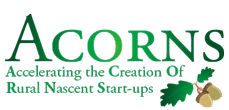Mastitis is inflammation of the breast tissue and if left untreated can lead to a bacterial infection. The updated guidelines now indicate that mastitis should be considered as a “Spectrum of conditions” as per Academy of breastfeeding Medicine ranging from blocked ducts to oversupply, bacterial infection and abscess.
Early detection, improved diagnostics, antibiotic stewardship, enhanced self-care, a holistic approach, and the integration of telehealth services collectively aim to improve the overall experience for those affected by mastitis.
Understanding Mastitis:
Mastitis typically occurs when bacteria enter the breast tissue, causing an infection. This condition is more prevalent among breastfeeding women, as the bacteria can enter the breast through a cracked or sore nipple. However, it can also affect non-breastfeeding individuals.
There have been some big changes that I will discuss briefly below:
Blocked ducts now referred to as ‘Ductal narrowing’ should be treated with ice and anti-inflammatory’s instead of heat and extra pumping to clear the blockage. Aggressive massage is not effective and can increase inflammation and cause tissue trauma.
Inflammatory mastitis:
This occurs due to continued ductal narrowing or if the condition worsens. The breast can become red, swollen, painful and you may start to have flu like symptoms.
Bacterial Mastitis:
Also known as infective mastitis requires antibiotic therapy. You do not need to stop breastfeeding in order to take same. You may experience a red hot wedge of the breast or it may spread to the full breast, you may spike a temperature and feel generally unwell. If these symptoms do not resolve in 24hours or they worsen the patient should be seen by a Doctor and assessed and commence antibiotic therapy is required.
Abscess: This occurs due to unresolved mastitis and required surgical intervention. You may feel a lump or notice a red shiny patch over the lump. This is diagnosed by assessment and ultrasound.
New recommendations:
Feed on demand: Feed as normal and do not aim to empty the breasts further as this can lead to increasing supply which can lead to a increased risk of further inflammation. In some cases where a mother is experiencing over supply she may need to do minimal hand expression to reduce engorgement until supply settles. It is important to emphasise to the mother that the aim is not to empty but for comfort until supply regulates. If exclusively pumping then pump babies requirement, if the breast is so swollen it may be best to reduce pumping time to allow inflammation to settle. This may lead to a dip in supply in that breast but once normal pumping or feeding returns the supply can increase.
Avoid deep massage: Lymphatic drainage can be very useful but avoid deep massage techniques or the use of vibration devises as these can add to the inflammation.
Consider anti inflammatories: this can help reduce inflammation . Ibuphrofen can be taken and is safe while breastfeeding. Paracetamol can also be taken and ice packs applied hourly.
Antibiotics should only be prescribed where the clinician feels it is bacterial mastitis.
If pumping ensure you are using the correct flange size as this can lead to issues and wear a correct fitting bra.
If you are experiencing over supply then working with a IBCLC to try to stabilize the milk supply to meet baby’s needs will reduce the risk of complications.
If you experience mastitis , consider working with an IBCLC to ensure good attachment & latch and to prevent more issues going forward.
It’s crucial for both healthcare professionals and individuals to stay informed and collaborate effectively in implementing these changes to ensure the best possible outcomes in mastitis management.
Nursing Mama offers in-person consults within Kildare, Dublin, and online Worldwide.







